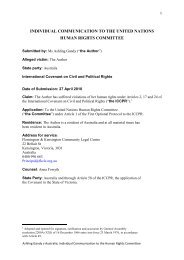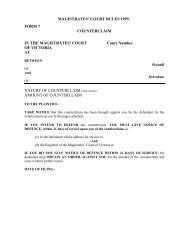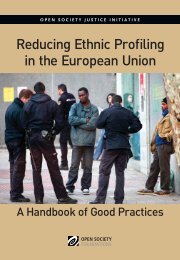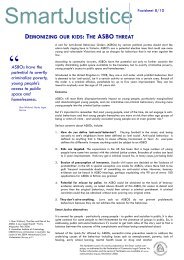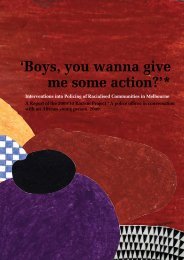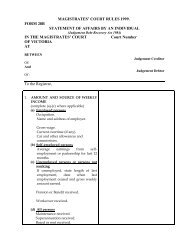Application for Consent Orders Kit - Community Law
Application for Consent Orders Kit - Community Law
Application for Consent Orders Kit - Community Law
Create successful ePaper yourself
Turn your PDF publications into a flip-book with our unique Google optimized e-Paper software.
EParenting ordersSECTION 60B OBJECT OF PART AND PRINCIPLES UNDERLYING IT60B(1) [Object of Part] The object of this Part is to ensure that children receive adequate and properparenting to help them achieve their full potential, and to ensure that parents fulfil their duties, and meettheir responsibilities, concerning the care, welfare and development of their children.60B(2) [Principles underlying object] The principles underlying these objects are that, except when itis or would be contrary to a child’s best interests:(a) children have the right to know and be cared <strong>for</strong> by both their parents, regardless of whether theirparents are married, separated, have never married or have never lived together; and(b) children have a right of contact, on a regular basis, with both their parents and with other peoplesignificant to their care, welfare and development; and(c) parents share duties and responsibilities concerning the care, welfare and development of theirchildren; and(d) parents should agree about the future parenting of their children.SECTION 65E CHILD’S BEST INTERESTS PARAMOUNT CONSIDERATION IN MAKING APARENTING ORDERIn deciding whether to make a particular parenting order in relation to a child, a court must regard thebest interests of the child as the paramount consideration.Note – Division 10 details with how a court determines a child’s best interests.SECTION 68F HOW A COURT DETERMINES WHAT IS IN CHILD’S BEST INTERESTS68F(1) [Determining child’s best interests]Subject to subsection (3), in determining what is in the child’s best interests, the court must considerthe matters set out in subsection (2).68F(2) [What court must consider]The court must consider:(a) any wishes expressed by the child and any factors (such as the child’s maturity or level ofunderstanding) that the court thinks are relevant to the weight it should give to the child’s wishes;(b) the nature of the relationship of the child with each of the child’s parents and with other persons;(c) the likely effect of any changes in the child’s circumstances, including the likely effect on the childof any separation from:(i) either of his or her parents; or(ii) any other child, or other person, with whom he or she has been living.(d) the practical difficulty and expense of a child having contact with a parent and whether thatdifficulty or expense will substantially affect the child’s right to maintain personal relations anddirect contact with both parents on a regular basis;(e) the capacity of each parent, or of any other person, to provide <strong>for</strong> the needs of the child, includingemotional and intellectual needs;(f) the child’s maturity, sex and background (including any need to maintain a connection with thelifestyle, culture and traditions of Aboriginal peoples or Torres Strait Islanders) and any othercharacteristics of the child that the court thinks are relevant;(g) the need to protect the child from physical or psychological harm caused, or that may be caused,by:(i) being subjected or exposed to abuse, ill-treatment, violence or other behaviour; or(ii) being directly or indirectly exposed to abuse, ill-treatment, violence or other behaviour that isdirected towards, or may affect, another person;(h) the attitude of the child, and to the responsibilities of parenthood, demonstrated by each of thechild’s parents;(i) any family violence involving the child or a member of the child’s family;(j) any family violence order that applies to the child or a member of the child’s family;(k) whether if would be preferable to make the order that would be least likely to lead to the institution



